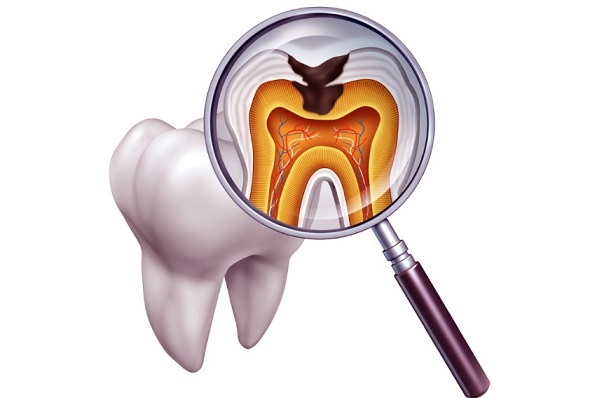Nikhil Prasad Fact checked by:Thailand Medical News Team Feb 13, 2025 2 months, 2 hours ago
Thailand Dental News: Tooth decay, also known as dental caries, remains one of the most common health problems worldwide, affecting both children and adults. Despite advancements in dental care, the need for effective and accessible treatments is still a major concern. A recent study led by researchers from the Department of Pediatric Dentistry at University Medicine Greifswald, Germany, provides new insights into innovative methods for managing caries in both primary (baby) and permanent teeth. Their findings emphasize minimally invasive treatments that can improve oral health while reducing the need for complex dental procedures.
 New Advances in Managing Tooth Decay in Children and Adults
A Fresh Look at Caries Management
New Advances in Managing Tooth Decay in Children and Adults
A Fresh Look at Caries Management
Caries, or tooth decay, is caused by bacterial activity that erodes tooth enamel, leading to cavities. It is often linked to poor oral hygiene, high sugar intake, and lack of access to proper dental care. This
Thailand Dental News report highlights several key findings from the latest research on caries management, focusing on prevention, non-invasive treatments, and more conservative approaches to treating decay.
One of the most significant topics discussed in the study is the effectiveness of silver diamine fluoride (SDF) in managing tooth decay. SDF has been gaining attention as a powerful tool for stopping cavities without the need for drilling. The study also explores alternative materials, such as glass ionomer cement (GIC), and their role in preserving tooth structure while treating decay.
The Role of Silver Diamine Fluoride
Silver diamine fluoride (SDF) has been extensively researched as a non-invasive treatment for cavities. The study reveals that SDF can successfully halt the progression of caries in both primary and permanent teeth. Researchers found that when applied to decayed areas, SDF not only stops the bacteria from further damaging the tooth but also strengthens the affected area, reducing sensitivity.
A double-cohort study compared the effectiveness of SDF with 5% fluoride varnish in treating early childhood caries. The results showed that while both treatments helped reduce tooth sensitivity, SDF had a significantly higher success rate in arresting decay. This suggests that SDF could be a game-changer in managing cavities, especially for young children who may be unable to tolerate invasive dental procedures.
Comparing Different Treatment Methods
The study also investigated various approaches to preventing and treating dental caries. Researchers conducted a long-term clinical study comparing the effectiveness of resin-based and GIC-based fissure sealants in preventing decay in molars. The findings revealed that both materials performed equally well over a 10-year period, suggesting that either could be a viable option for cavity prevention.
Additionally, a meta-analysis on selective caries removal techniques in permanent teeth confirmed that less invasive approaches are preferable for preserving the health of tooth pulp. Traditional methods of removing all decayed tissue can sometimes lead to
unnecessary damage, whereas selective removal techniques allow dentists to keep as much healthy tooth structure as possible.
The Impact of Diet and Cost-Effectiveness
Another aspect of the study examined how diet influences the longevity of dental treatments. A laboratory study tested the effects of various foods and beverages on composite fillings, revealing that certain diets may contribute to discoloration and reduced durability of restorations. This underscores the importance of maintaining a balanced diet to support long-term oral health.
In terms of cost-effectiveness, the study highlighted the need to consider socioeconomic factors when choosing treatment methods. A systematic review of early childhood caries management emphasized that different populations may require tailored approaches to ensure accessibility and affordability of care.
Future Directions in Caries Treatment
With the continuous advancement of dental research, experts believe that future treatments will become even more patient-friendly. The study suggests that artificial intelligence (AI) may soon play a role in diagnosing and managing caries, potentially making dental care more efficient and widely available. Researchers also anticipate that further refinements in minimally invasive techniques will continue to transform the field of dentistry, ensuring that treatments become less painful, more effective, and more affordable for people worldwide.
Conclusion
The latest research on caries management underscores the importance of non-invasive and cost-effective treatments. Silver diamine fluoride (SDF) has emerged as a leading option for stopping cavities, while alternative materials like glass ionomer cement continue to prove their effectiveness in dental restorations. Minimally invasive techniques, selective caries removal, and diet-conscious dental care are all shaping the future of cavity management. As the field advances, the focus remains on providing accessible, high-quality care that prioritizes patient comfort and long-term oral health.
The study findings were published in the peer-reviewed journal: Medicina.
https://www.mdpi.com/1648-9144/61/2/316
For the latest
Thailand Dental News, keep on logging to Thailand Medical News.
Read Also:
https://www.thailandmedical.news/news/n-chlorotaurine-shows-promise-against-gum-disease
https://www.thailandmedical.news/news/more-studies-are-showing-that-covid-19-can-cause-various-oral-health-issues-and-even-damage-your-gums-and-teeth
https://www.thailandmedical.news/news/breaking-news:-dental-x-rays-increase-cancer-risk
Follow us on:
https://x.com/ThailandMedicaX
https://www.facebook.com/ThailandMedicalNews
https://bsky.app/profile/thailandmedical.bsky.social
https://gettr.com/user/thailandmedicalnews
https://www.tribel.com/thailandmedical/wall
and 33 other social media platforms
